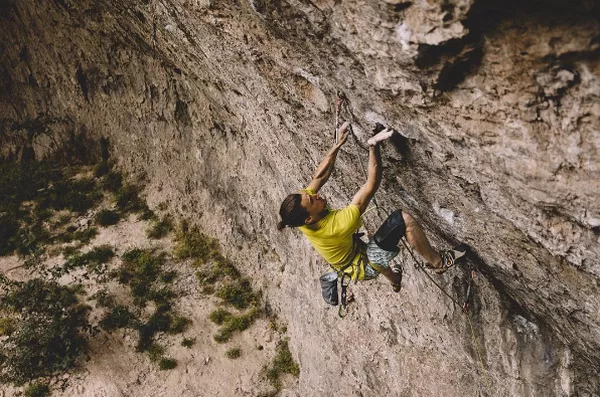In recent years, sport climbing has emerged as one of the most exhilarating and accessible forms of climbing, captivating enthusiasts around the globe. What distinguishes this discipline from traditional forms of climbing, such as alpine or mountaineering, is its focus on challenging routes equipped with fixed protection, allowing climbers to push their limits in a controlled environment. Sport climbing embodies a fusion of athleticism, mental fortitude, and technical skill, making it a compelling sport for both beginners and seasoned climbers alike.
Understanding Sport Climbing
Sport climbing involves ascending pre-defined routes on rock faces using a series of bolts and anchors for protection. Unlike traditional climbing, where climbers place their own protection as they ascend, sport climbers rely on permanent bolts drilled into the rock for safety. This setup enables climbers to focus more on movement and technique rather than the logistics of placing gear.
Equipment
The equipment used in sport climbing is designed for efficiency and safety. Key components include:
- Climbing Shoes: Specialized footwear with sticky rubber soles for better grip.
- Harness: Used to secure the climber to the rope.
- Dynamic Rope: Elastic rope designed to absorb the energy of a fall.
- Quickdraws: Sets of two carabiners connected by a nylon sling, used to attach the rope to bolts.
Origins and Evolution
Sport climbing as we know it today emerged in the 1980s in Europe and quickly gained popularity in North America. This era saw the development of innovative techniques and equipment, including lightweight harnesses and stronger bolts, which contributed to the expansion of sport climbing’s appeal. The sport continued to evolve, with climbers pushing the boundaries of difficulty and exploring new rock faces around the world.
The Appeal of Sport Climbing
What draws climbers to sport climbing is its accessibility and the thrill of pushing oneself to the limit in a relatively safe environment. Here are some key aspects of its appeal:
Athleticism
Sport climbing demands a blend of strength, flexibility, and endurance. Climbers develop exceptional upper body and core strength, along with agility and balance. The physical demands of the sport attract athletes from various backgrounds, including gymnastics and martial arts.
Problem-Solving
Each climb presents a unique puzzle that requires problem-solving skills. Climbers must analyze the route, anticipate challenges, and adapt their approach on the fly. This mental aspect adds a layer of complexity and excitement to the sport.
Community
Sport climbing fosters a strong sense of community. Climbers often gather at local crags or climbing gyms to share beta (route information), support each other, and celebrate achievements. The camaraderie among climbers creates a welcoming environment for newcomers.
Sport Climbing in Practice
1. Indoor Climbing Gyms
Indoor climbing gyms have played a pivotal role in popularizing sport climbing. These facilities offer controlled environments where climbers can hone their skills on artificial walls before venturing outdoors. Gyms often feature routes of varying difficulty levels, catering to climbers of all abilities.
2. Outdoor Climbing
For many, the ultimate goal of sport climbing is to conquer natural rock faces in the great outdoors. Climbers seek out iconic destinations like Yosemite Valley in California or the limestone cliffs of Kalymnos, Greece, for challenging routes and breathtaking scenery. Outdoor climbing requires additional skills such as route finding and risk management.
3. Safety and Risk Management
While sport climbing is generally considered safer than traditional climbing, it still carries inherent risks. Proper safety practices, including thorough equipment checks, effective belaying techniques, and regular training in emergency procedures, are essential for mitigating these risks. Climbers also learn to assess rock quality and recognize potential hazards before attempting a climb.
The Future of Sport Climbing
As sport climbing gains traction as an Olympic sport and attracts a growing number of participants, its future looks promising. The inclusion of sport climbing in the 2020 Tokyo Olympics marked a significant milestone for the sport, exposing it to a global audience and inspiring a new generation of climbers. Advancements in technology and gear continue to push the boundaries of what is possible, opening up new opportunities for exploration and achievement.
Conclusion
In conclusion, sport climbing represents a thrilling evolution in the world of climbing, combining physical prowess with mental acuity in a dynamic and inclusive setting. Whether scaling the walls of a local gym or embarking on a challenging outdoor ascent, sport climbers embody the spirit of adventure and the pursuit of excellence. As this captivating sport continues to evolve, it promises to inspire climbers of all ages and abilities to reach new heights.

